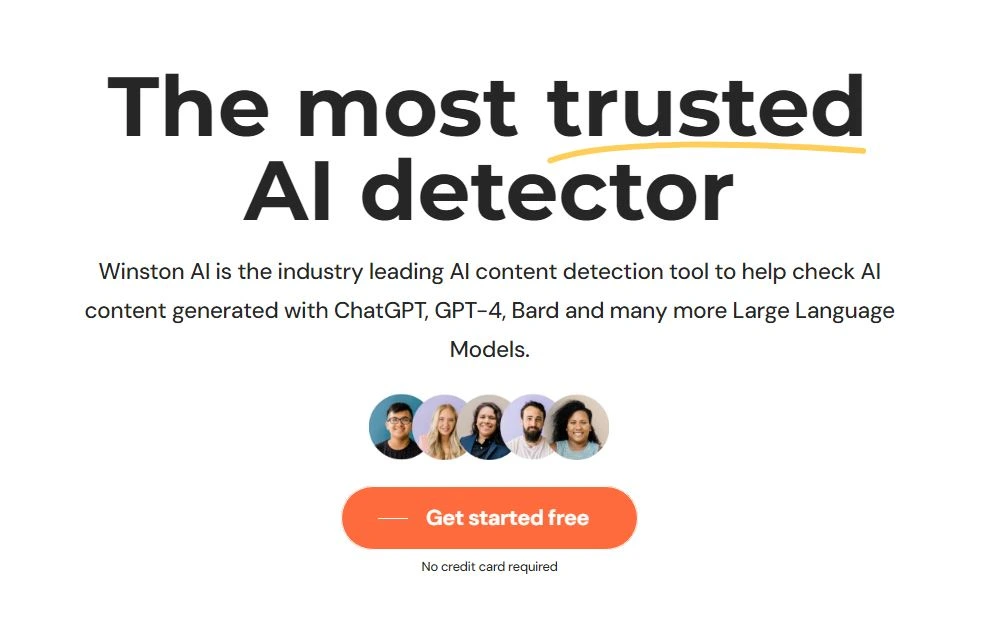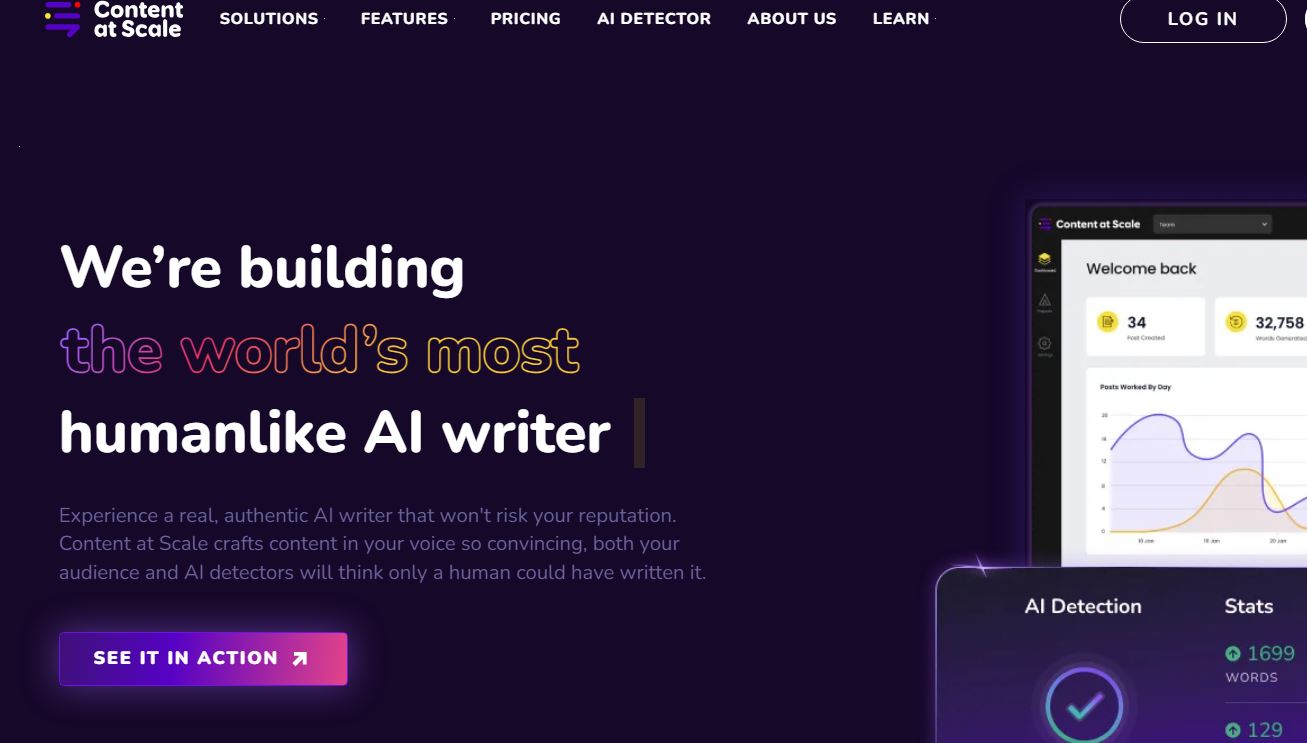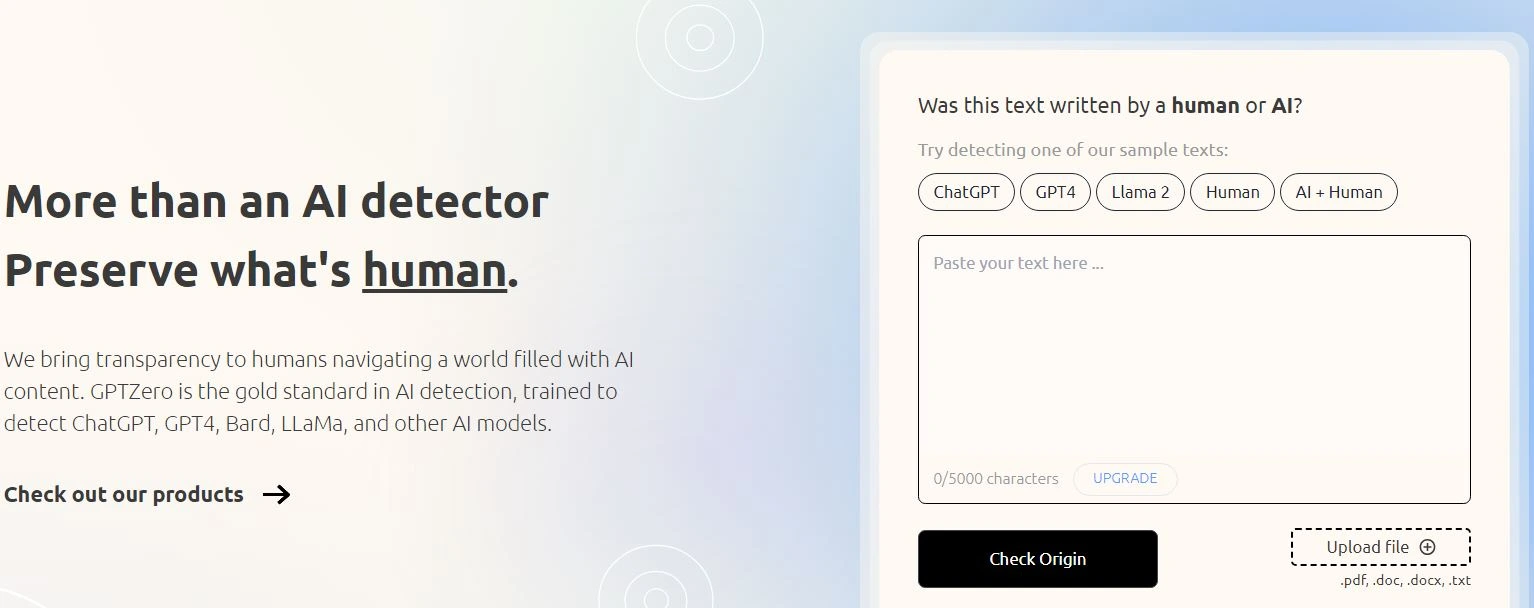The rise of AI writing assistants like ChatGPT has teachers concerned. While these tools can help students brainstorm ideas, excessive use can hinder learning. Students may be tempted to simply generate full essays and assignments via AI with minimal effort. This not only cheats the learning process but also makes it hard to assess a student’s actual writing capabilities.
To combat improper AI use, teachers need specialized tools to detect if student work is AI-generated. While AI tools themselves are poor judges of their content, dedicated AI detection platforms can accurately flag text created by bots. Let’s discuss the Best AI detecttion tools for teachers.
“If You want to Remove AI Detection and Bypass AI Detectors Use Undetectable AI: It can do it in one click“
Why AI Detection Matters for Teachers
Before exploring the detection tools, it helps to understand why AI detection is crucial for teachers:
- Prevents plagiarism – Passing off AI-generated text as one’s own work is a form of plagiarism. AI detection helps curb this academic dishonesty.
- Enforces learning – Knowing assignments will be checked keeps students focused on doing their own work and developing writing skills.
- Assesses abilities – Only human-written work can give teachers a true assessment of each student’s abilities.
- Upholds integrity – Academic integrity remains intact when students know they cannot get away with AI-aided shortcuts.
Rigorous education requires students to learn skills themselves. Relying on AI defeats this purpose. AI detection tools empower teachers to enforce academic honesty.
Challenges of DIY AI Detection
Can teachers manually detect if an assignment was AI-created? Possibly – but it’s challenging.
Let’s look at some limitations of manual Artificial intelligence detection:
- Not trained for evaluation – Teachers are not specifically trained to detect AI text patterns.
- Time-consuming – Manually evaluating assignments for AI use requires significant additional effort.
- Prone to inaccuracy – Without proper training, human detection may wrongly flag genuine text as AI.
- AI itself can’t detect well – As seen in the Texas A&M case, using AI tools to detect their own content is unreliable.
- Lacks root cause analysis – Manual methods cannot pinpoint exactly which parts of the text were AI-generated.
Specialized AI detection tools overcome these issues and streamline bot content identification for teachers.
Best AI Detection Tools for Teachers
Many AI detection tools have emerged to help educators spot machine-generated text. Here are the top AI detectors that teachers should consider:
1. Copyleaks

Copyleaks stands out with its high accuracy in identifying content created by ChatGPT, Jasper, Claude, and other AI tools.
Key features:
- 99.1% AI detection accuracy as per Cornell University research
- Support for English, French, German, and 10+ other languages
- Detects rephrased/spun content that’s trying to hide AI origins
- The free version allows 250,000 scanned words per month
- Paid plans provide an AI plagiarism checker
For reliable multi-lingual AI detection, Copyleaks is a top choice.
2. Winston AI

Winston AI is designed exclusively for educators to detect AI-written essays, assignments, and test responses.
Why it’s recommended:
- 99.6% accuracy in detecting ChatGPT and GPT-3 content
- Generates individualized analysis reports to share with students
- Optical Character Recognition exposes AI use even in handwritten text
- Free version supports up to 2000 words
- Paid plans add plagiarism detection and readability analysis
For classroom AI detection, Winston AI delivers top-notch results.
3. Content at Scale

The Content at Scale AI detector stands out for its free accessing, supporting 25 languages.
Notable aspects:
- Achieves 98.3% accuracy in finding AI-generated text
- Supports English, Spanish, German, Arabic and 25+ other languages
- Completely free to use without any subscriptions
- No limits on how frequently you can use it
- Easy-to-use interface that just requires copying and pasting content
For teachers who want a free, multi-lingual tool, Content at Scale is ideal.
4. GPTZero

GPTZero focuses solely on detecting ChatGPT content with 98% accuracy. GPTZeroX is tailored for educators.
Why teachers prefer it:
- Created by a Princeton computer science student specifically to detect ChatGPT
- Analyzes text at sentence, paragraph and document level
- GPTZeroX allows batch uploads for entire classes
- Highlights parts of text generated by AI
- Faster speeds than free version
To keep ChatGPT in check, GPTZero is a simple yet effective choice.
5. Passed.AI

Passed.AI offers capabilities fine-tuned for academic use cases.
Notable features:
- Accuracy rate of 98% for detecting GPT-3, GPT-J, GPT-Neo and GPT-4 content
- Chrome extension seamlessly checks Google Docs files for AI use
- Shows edit history to chart how each document was written
- Plagiarism detection further validates originality
- monthly subscription model at affordable pricing
For easy integration with school workflows, Passed.AI hits the mark.
6. TurnItIn

The popular plagiarism checker TurnItIn has also rolled out an AI detector.
Why TurnItIn rocks:
- Already used by thousands of institutions worldwide
- Students are familiar with submitting assignments via TurnItIn
- No student access ensures rigor – teachers control evaluations
- Integrates tightly with other TurnItIn products
- Delivers updates and new features regularly
For schools already using TurnItIn, their AI detector is a natural fit.
7. AI Detector Pro

AI Detector Pro makes the list for its versatility in detecting both ChatGPT and Google’s Bard output.
Notable aspects:
- 98% accuracy for wide range of AI models including Bard
- Neatly highlights text fragments generated via AI
- Allows editing AI sections and giving student feedback
- Can assess websites along with docs
- Free version permits 3 assessments
For wide bot detection beyond just ChatGPT, AI Detector Pro delivers.
This covers the top AI detection tools trusted by educators worldwide. But how exactly do these tools work? What methods do they use to catch sneaky AI content?
How Do AI Detectors Identify Bot-Generated Text?
The core mechanisms behind AI detectors include:
Linguistic Analysis
AI detectors analyze vocabulary, grammar, structure, coherence, readability and other linguistic cues in the text. Patterns like high lexical complexity but low coherence help uncover AI content.
Perplexity Scoring
Perplexity measures how accurately a probability model predicts a sample. Detectors compute the perplexity score for a text sample across different AI models. High perplexity indicates low human probability.
Statistical Analysis
Factors like sentence length variation, word repetition, and burstiness indicate automation. Detectors run statistical tests to quantify these tell-tale factors.
Training on AI Models
Detecting AI requires knowing AI. Detectors are explicitly trained on the latest AI models including GPT-3, Bard, Claude etc using machine learning techniques. This trains them to pinpoint patterns peculiar to each bot.
ML Classifiers
Classifiers analyze texts and classify them as either human-written or machine-written based on patterns discerned via neural networks.
These techniques allow detectors to identify signs of non-human writing with high accuracy.
Integrating an AI Detector into Your Classroom Workflow
Once you’ve chosen an AI detection tool, how do you integrate it into your teaching workflow?
- Set expectations – Update syllabus and course policy to state use of AI detectors to enforce academic integrity.
- Demonstrate credibility – Show students samples of detector results to set expectations around accuracy.
- Share access – For tools with student access, provide logins or install browser extensions.
- Simplify submissions – Leverage integrations with Google Drive or school platforms for seamless submissions.
- Be open – If the detector incorrectly flags genuine student work, be open to re-evaluating based on classroom evidence.
- Follow up respectfully – Notify students privately if AI use is suspected and give them a chance to explain.
With the right combination of deterrence and discretion, detectors can help uphold academic values.
Limitations of Current AI Detectors
Although AI detectors are steadily improving, some limitations remain:
- Not foolproof – No detector is 100% perfect against advanced techniques to obfuscate AI text.
- Limited languages – Many tools only work for English or a handful of languages.
- Paid upgrades required – Free versions often have constraints like limited words or number of checks.
- Figures/images not analyzed – Detectors only assess text content.
- Doesn’t consider contextual clues – Detectors lack classroom insights to validate conclusions.
- Legibility challenges – Handwritten content can pose challenges for detection accuracy.
While AI detectors are helpful aids, human supervision is still important for judicious use.
The Future of AI Detection in Education
AI will likely become an integral part of learning, so detectors too need to evolve:
- Integrated by default – Detection may get baked into education platforms for easy oversight.
- Customized interventions – Beyond flagging content, detectors could suggest personalized learning interventions.
- Open-source databases – Community-driven databases can help train detectors on different writing styles.
- Broader scope – Checking figures, images, videos and other modes of content for AI influence.
- Bias mitigation – Reduce bias by training on diverse student writing samples.
- Watermarking – AI tools themselves could watermark content they generate to simplify detection.
In the future, we can expect AI detection to also augment learning in positive ways, not just enforce rules.
Key Takeaways on AI Detectors for Teachers
AI-assisted writing poses new challenges for maintaining academic integrity. AI detection tools are crucial allies for teachers in deterring improper use while supporting honest students.
Here are the key points to remember:
-Specialized detectors like Copyleaks and GPTZero spot AI content reliably using linguistic analysis, perplexity scoring, statistical checks etc.
-Top tools boast 95%+ accuracy vs typical human detection or AI self-assessment.
-Integration with school ecosystems like TurnItIn and Google Drive eases workflow.
-No detector is foolproof so human oversight is still required for fairness.
-Open communication and respect build student trust in fair AI detection practices.
By embracing AI detection tools, educators can continue to meaningfully mentor students in developing their own writing skills.
In closing, AI is a reality that’s here to stay. With prudent usage guidelines and oversight methods like detection tools, we can ensure AI contributes to, rather than diminishes, education.
FAQ’s
What AI detector do most teachers use?
Most teachers rely on TurnItIn’s AI detector because of its tight integration with TurnItIn’s plagiarism checker already used widely in schools and universities.
What is the most accurate AI detector?
Based on independent testing and user reviews, Copyleaks boasts the highest accuracy of 99.1% in detecting AI content across both English and non-English languages.
How can teachers detect AI writing?
Teachers can detect AI writing by using specialized tools like GPTZero and Winston AI that analyze linguistic patterns. Manual detection by looking for lack of coherence is also possible.
Which AI detector is used by universities?
Many universities use TurnItIn’s integrated AI detector since they already use TurnItIn for plagiarism checks. Some also use detectors like Copyleaks and GPTZero based on high accuracy.
Can Turnitin detect Quillbot?
Yes, TurnItIn’s AI detector is capable of detecting text that has been generated or rewritten by tools like Quillbot in addition to ChatGPT.
What is the best ChatGPT detector for teachers?
GPTZero is considered the best detector specifically for ChatGPT content as it focuses solely on exposing ChatGPT generated text with 98% accuracy.


